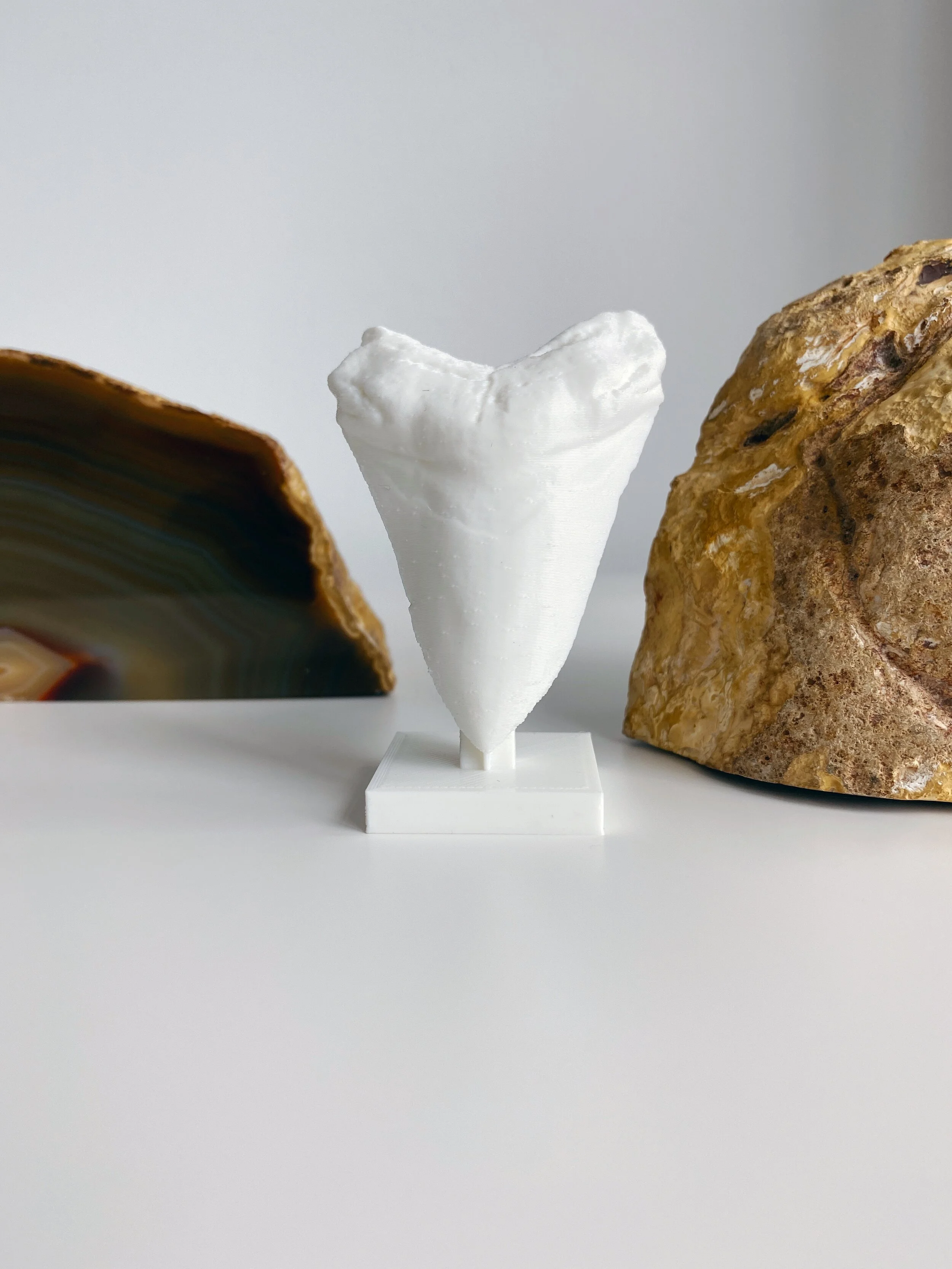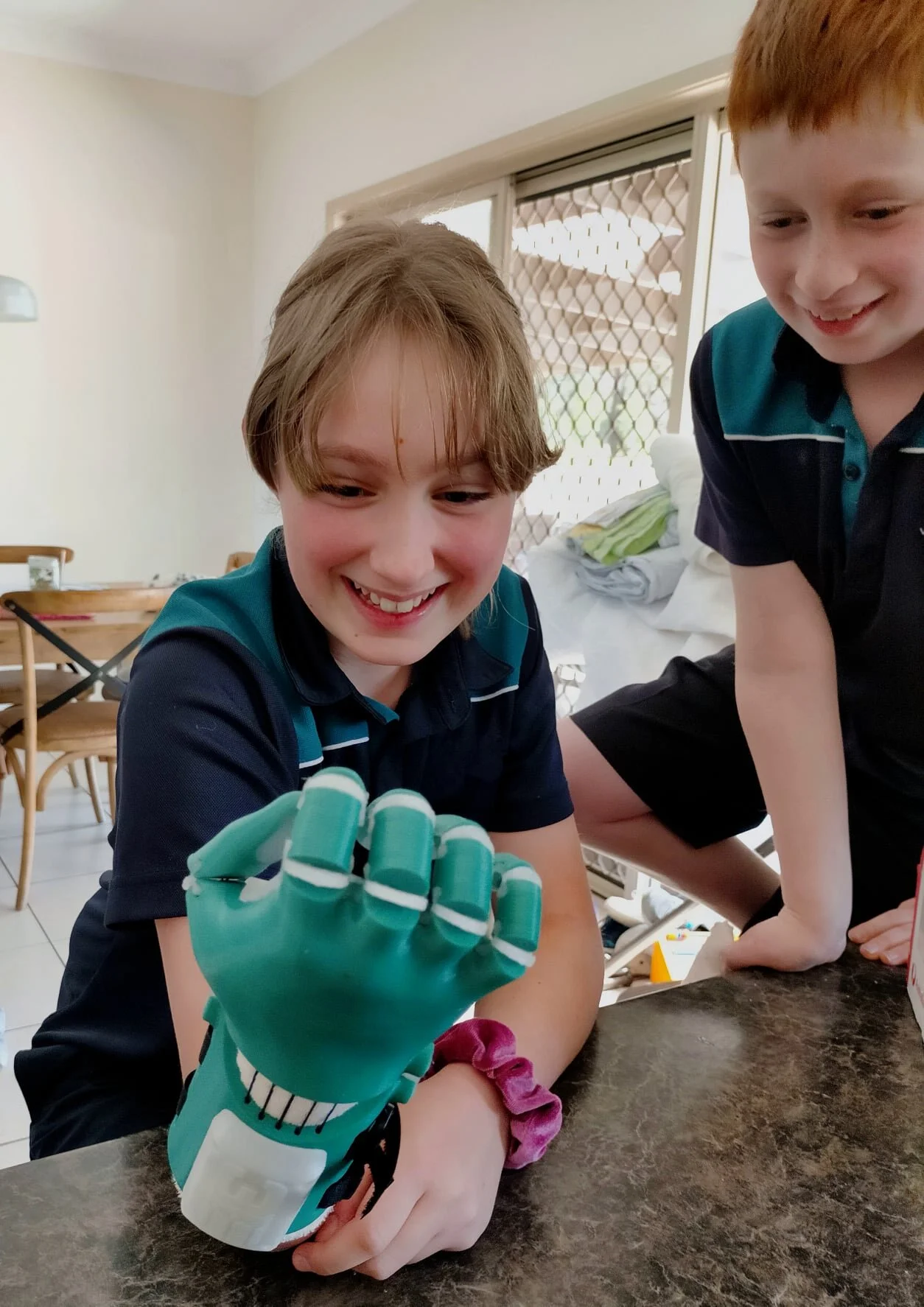Restoring and Recreating Unique Objects with 3D Design
Shark tooth printed by Jett 3D in white PLA
Prototyping is the iterative process used by product designers to create new parts and inventions, and it's also what 3D printing is most well-known for. However, 3D printing is also extremely important to the restoration and recreation of old and existing parts. Thanks to the help of 3D scanning technology, architects, engineers, scientists, doctors, historians, archaeologists, and beyond are now able to create near-perfect 3D printed replicas of almost anything. Existing and emerging 3D technology is working hard to preserve history and in some cases, save lives.
Architecture
Ornamental façade element cast out of concrete using 3D printed mold
When restoring buildings, architects and engineers often want to preserve as much of the original ornamental elements as possible. If the building is newer and in relatively good shape, this usually isn’t a difficult task. However, if the building is older and/or contains delicate details, it can become much more difficult. Take for example a façade ornamentation that would be so costly to recreate by hand that it would be cheaper to tear the building down and rebuild it, rather than restore it. This was the case for 574 Fifth Avenue, a building in NYC, until an architectural firm had the idea to 3D scan the facade and then 3D print the molds that could be used to cast new parts and sections with the original detailing. The new parts were able to be produced faster and cheaper than if they were made using traditional methods, which made it possible to save the historic architecture.
Concrete arch being removed from 3D printed mold
Sometimes when restoring buildings, the issue is less about preserving ornamentation and more about maintaining structural integrity. Elements such as arches can be essential to the engineering and therefore need to be repaired or replaced using extremely precise techniques. 3D printing’s ever-growing repertoire of printers is making it possible to print larger and larger parts, such as molds that can be used for concrete casting. These molds can be designed with extreme accuracy, such that the new part is nearly identical to the original. The parts can therefore mimic not only the look, but the function of the original.
Historic relics
Monumental Arch of Palmyra replica on display
Arches have been constructed throughout history both for their structural integrity and to signify an entrance to an important or meaningful area. The ornamental Monumental Arch of Palmyra was constructed sometime around 200 AD as a link between the main street of the Colonnade and the Temple of Bel, in present day Syria. However, in 2015 the ruins of the city of Palmyra, including the Arch, were destroyed by ISIS. In an effort to maintain this historic structure of the city, a digital 3D model of the Arch was developed from photographs prior to its destruction. The digital 3D model was then used by robotic arms to carve a scaled down version of the Arch from marble.
3D printed replica of the Lady of Cao
Many of us have seen digital facial recreations of historical figures such as Egyptian pharaohs and even Jesus. These recreations have typically been done by examining a combination of descriptive historical text and drawings. Occasionally, especially in the case of mummies, CT scans can be done of human remains to create digital 3D models. Recently, scientists and historians have begun taking recreation one step further by 3D printing the faces and bodies. An example of this is the well-preserved remains of a Peruvian woman called the Lady of Cao, who lived around 1,700 years ago. Her remains were scanned and visually analyzed to create a life-size 3D printable model. The life-like statue is now on exhibition at Peru’s Museo Cao in Trujillo.
Two replica dinosaur bones being printed on a Gigabot printer
When it comes to restoring and recreating historic relics with 3D design, few objects are older than dinosaur bones and fossils. Rarely do archeologists find whole skeletons that are in great condition, and even if they do, the bones are fragile and can break during excavation, transportation, and reassembly. In an effort to exhibit full skeletons, museums often rely on 3D printing missing and broken parts. Or in an effort to more safely preserve the bones, they 3D scan and print an entire replica that can be placed on exhibit, eliminating the fear that one-of-a-kind bones will be damaged by museum goers and staff. Of course, your typical desktop 3D printer is not doing the work of recreating the leg of triceratops -- most printing is done on new large-scale printers such as re:3D’s Gigabot.
Ecosystems
3D printed “coral” reef printed in ceramic
3D printing is not only being used to recreate historic and existing pieces, but also to propagate new ecosystems. The availability of eco-friendly printing materials and processes only enhances these efforts. A prime example of an ecosystem that is utilizing the power of 3D printing is coral reef reconstruction. Labs are designing and printing new reef-like structures in sustainable materials and deploying them into areas where reefs are being depleted. The goal of this effort is to encourage new reef growth and increase biodiversity.
Lab grown synthetic rhino horn
Another way to support the restoration of an ecosystem is to remove its predators. 3D printing can be a solution to deter human predators such as poachers seeking rare animal materials. New 3D printing materials that mimic existing natural materials, like rhino horns, are being developed in an effort to lessen the demand for the real animal parts.
Grecia the Toucan with his nylon 3D printed top beak
Sometimes the animal parts that are being printed aren’t for ornamental purposes, but are instead prosthetics. An abused toucan in Costa Rica was the recipient of a 3D printed beak, which was custom designed to replicate the real portion that he had lost. The beak was printed in durable yet lightweight nylon in an effort to make it as close to the natural material as possible. While not able to be returned to the wild, Grecia was able to live comfortably at a local zoo with his new beak.
Anatomical structures
A prosthetic hand designed and printed by the e-NABLE community
A more common use for 3D printed prosthetics is the recreation of human limbs. 3D printing is a near perfect solution for medical devices that need to be highly precise, fitted to the individual, and durable. Prosthetics are designed and printed in a way that helps restore patients back to nearly full functionality. Organizations such as e-NABLE are making it easy and affordable to 3D print custom prosthetics by pairing designers and printers with people in need of prosthetic limbs.
An artificial hip cup printed in Trabecular Titanium
We also now have the ability to 3D print internal body part replacements. Similar to prosthetics, these parts are designed to fit each patient perfectly and use FDA approved materials that are best suited to mimic the originals. Joint replacement surgery frequently utilizes 3D printed parts that are designed and manufactured using patients’ MRI and CT scans. New materials that even more closely recreate human tissue are continuously being developed, with the goal that one day the new parts will act identically to the uninjured originals.











